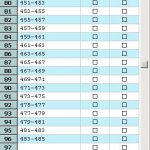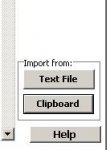I was wondering if it is possible or practical to create a second close call option setting?
The idea is to increase the time closecall looks at activity on a found frequency. Currently it ignores anything less than 30ms although I am not sure of the exact timing used. I know that increasing the time will result in a lot of possible false hits but anyone using it should be ready to accept the issue. This would make locating new DMR channels and services easier.
Since I am doing a wish list is ity possible to change the sensitivity of closecall? The current settings are good for cities but in the country there is less rf noise and a higher sensitivity would be useful.
The idea is to increase the time closecall looks at activity on a found frequency. Currently it ignores anything less than 30ms although I am not sure of the exact timing used. I know that increasing the time will result in a lot of possible false hits but anyone using it should be ready to accept the issue. This would make locating new DMR channels and services easier.
Since I am doing a wish list is ity possible to change the sensitivity of closecall? The current settings are good for cities but in the country there is less rf noise and a higher sensitivity would be useful.






